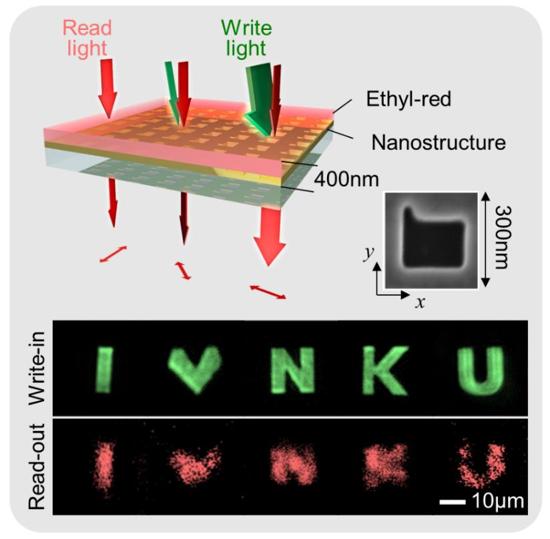Promoted by enthusiasm for future massive data processing by photons in parallel architectures, spatial light modulators (SLMs) were invented half a century ago. With the help of external control signals, such devices can manipulate light by modulating its amplitude, phase or polarization both spatially and temporally at will, which enables encoding information into an optical wavefront.
Depending on the way that the control information is written into the devices, the SLMs can be divided into electrically addressed (EASLMs) and optically addressed (OASLMs). And the later one is highly valuable for realizing future all-optical data processing, which implies controlling light by light without conversion between optical and electrical domains.
Metasurfaces, as an artificially engineered interfaces, show unprecedent abilities in controlling the optical wavefront at will. Furthermore, the metasurfaces can boost the nonlinear interactions and make it possible for dynamic control of optical wave under weak pump light.
Moreover, subwavelength sized unit cells of the metasurfaces not only ensure the light transmission (or reflection) without diffraction, but also act as the natural pixels. Those advantages make the metasurface a novel framework for the OASLMs with ultrasmall profile and ultrahigh resolution inaccessible by the current SLM technologies.
The research group led by Assoc. Mengxin Ren and Prof. Jingjun Xu from Nankai University reported an OASLM based on a nonlinear metasurface (MS-OASLM) recently (as shown by Fig.1). The results are published in Photonics Research, Volume 9, No. 4, 2021 (S. Gong, et al., Optically addressed spatial light modulator based on nonlinear metasurface).
By such novel OASLM, the information carried by the intensity distribution of a write beam is successfully encoded into another read light in form of spatial polarization distributions. The MS-OASLM has an ultrathin thickness of only 400 nm, which is thinner than one-tenth of any conventional SLMs.
The resolution could achieve 500 line pairs per millimeter (lp/mm), which is more than one order of magnitude higher than the typical commercial SLMs devices. Such metasurface based OASLM would find wide applications in novel optical displays and all-optical data parallel processing techniques.

Fig.1 MS-OASLM and image projection based on it.


